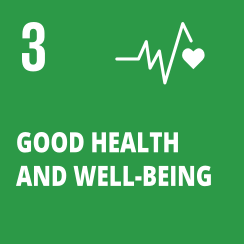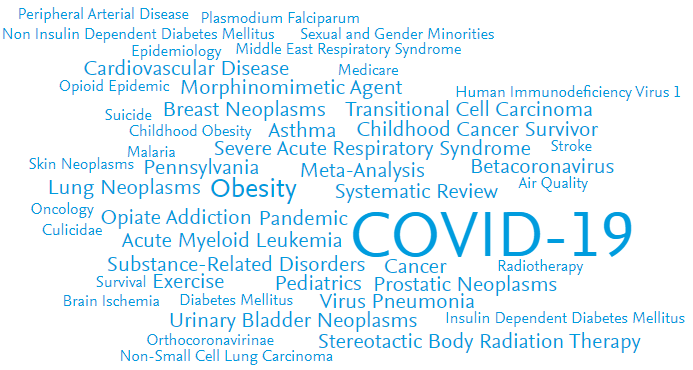
Ensure healthy lives and promote well-being for all at all ages
The targets for this goal involve reducing the global maternal mortality ratio; ending preventable deaths of newborns and children under 5 years of age; ending the epidemics of AIDS, tuberculosis, malaria and neglected tropical diseases; reducing premature mortality from non-communicable diseases; strengthening the prevention and treatment of substance abuse; halving the number of deaths and injuries from road traffic accidents; ensuring universal access to sexual and reproductive health-care services; achieving universal health coverage; reducing deaths and illnesses from hazardous chemicals and air, water and soil pollution and contamination; strengthening the implementation of the World Health Organization Framework Convention on Tobacco Control; supporting research and development of vaccines and medicines for communicable and non‑communicable diseases and provide access to medicines for all; increasing health financing and the recruitment, development, training and retention of the health workforce in developing countries; and, strengthening the capacity for early warning, risk reduction and management of national and global health risks. More details on this goal can be found in the Targets & Indicators section below.

Source: SciVal.com | This word cloud was created using publications from Penn State researchers
Related News
Penn State Health’s school health assessments benefit students, communities
Annual health screenings, a requirement of the Pennsylvania Department of Health, have been performed at Lebanon School District in partnership with Penn State Health since 2013. Data gleaned from the screenings will help some students [...]
Penn State Extension to offer free virtual walking program
Anyone interested in developing healthy habits and increasing stamina can benefit from a free Penn State Extension virtual walking program called “Everybody Walk Across Pennsylvania.” The statewide program will take place from Sept. 1 to Nov. [...]
Targets & Indicators
Target 3.1: By 2030, reduce the global maternal mortality ratio to less than 70 per 100,000 live births
- Indicator 3.1.1: Maternal mortality ratio
- Indicator 3.1.2: Proportion of births attended by skilled health personnel
Target 3.2: By 2030, end preventable deaths of newborns and children under 5 years of age, with all countries aiming to reduce neonatal mortality to at least as low as 12 per 1,000 live births and under‑5 mortality to at least as low as 25 per 1,000 live births
- Indicator 3.2.1: Under-5 mortality rate
- Indicator 3.2.2: Neonatal mortality rate
Target 3.3: By 2030, end the epidemics of AIDS, tuberculosis, malaria and neglected tropical diseases and combat hepatitis, water-borne diseases and other communicable diseases
- Indicator 3.3.1: Number of new HIV infections per 1,000 uninfected population, by sex, age and key populations
- Indicator 3.3.2: Tuberculosis incidence per 100,000 population
- Indicator 3.3.3: Malaria incidence per 1,000 population
- Indicator 3.3.4: Hepatitis B incidence per 100,000 population
- Indicator 3.3.5: Number of people requiring interventions against neglected tropical diseases
Target 3.4: By 2030, reduce by one third premature mortality from non-communicable diseases through prevention and treatment and promote mental health and well-being
- Indicator 3.4.1: Mortality rate attributed to cardiovascular disease, cancer, diabetes or chronic respiratory disease
- Indicator 3.4.2: Suicide mortality rate
Target 3.5: Strengthen the prevention and treatment of substance abuse, including narcotic drug abuse and harmful use of alcohol
- Indicator 3.5.1: Coverage of treatment interventions (pharmacological, psychosocial and rehabilitation and aftercare services) for substance use disorders
- Indicator 3.5.2: Alcohol per capita consumption (aged 15 years and older) within a calendar year in litres of pure alcohol
Target 3.6: By 2020, halve the number of global deaths and injuries from road traffic accidents
- Indicator 3.6.1: Death rate due to road traffic injuries
Target 3.7: By 2030, ensure universal access to sexual and reproductive health-care services, including for family planning, information and education, and the integration of reproductive health into national strategies and programs
- Indicator 3.7.1: Proportion of women of reproductive age (aged 15–49 years) who have their need for family planning satisfied with modern methods
- Indicator 3.7.2: Adolescent birth rate (aged 10–14 years; aged 15–19 years) per 1,000 women in that age group
Target 3.8: Achieve universal health coverage, including financial risk protection, access to quality essential health-care services and access to safe, effective, quality and affordable essential medicines and vaccines for all
- Indicator 3.8.1: Coverage of essential health services
- Indicator 3.8.2: Proportion of population with large household expenditures on health as a share of total household expenditure or income
Target 3.9: By 2030, substantially reduce the number of deaths and illnesses from hazardous chemicals and air, water and soil pollution and contamination
- Indicator 3.9.1: Mortality rate attributed to household and ambient air pollution
- Indicator 3.9.2: Mortality rate attributed to unsafe water, unsafe sanitation and lack of hygiene (exposure to unsafe Water, Sanitation and Hygiene for All (WASH) services)
- Indicator 3.9.3: Mortality rate attributed to unintentional poisoning
Target 3.a: Strengthen the implementation of the World Health Organization Framework Convention on Tobacco Control in all countries, as appropriate
- Indicator 3.a.1: Age-standardized prevalence of current tobacco use among persons aged 15 years and older
Target 3.b: Support the research and development of vaccines and medicines for the communicable and non‑communicable diseases that primarily affect developing countries, provide access to affordable essential medicines and vaccines, in accordance with the Doha Declaration on the TRIPS Agreement and Public Health, which affirms the right of developing countries to use to the full the provisions in the Agreement on Trade-Related Aspects of Intellectual Property Rights regarding flexibilities to protect public health, and, in particular, provide access to medicines for all
- Indicator 3.b.1: Proportion of the target population covered by all vaccines included in their national program
- Indicator 3.b.2: Total net official development assistance to medical research and basic health sectors
- Indicator 3.b.3: Proportion of health facilities that have a core set of relevant essential medicines available and affordable on a sustainable basis
Target 3.c: Substantially increase health financing and the recruitment, development, training and retention of the health workforce in developing countries, especially in least developed countries and small island developing States
- Indicator 3.c.1: Health worker density and distribution
Target 3.d: Strengthen the capacity of all countries, in particular developing countries, for early warning, risk reduction and management of national and global health risks
- Indicator 3.d.1: International Health Regulations (IHR) capacity and health emergency preparedness
- Indicator 3.d.2: Percentage of bloodstream infections due to selected antimicrobial-resistant organisms






